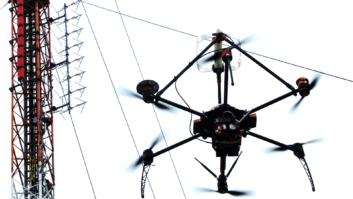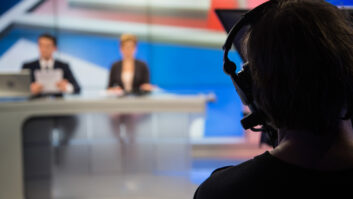The FCC is considering new rules to ensure that environmental effects of proposed towers — including their impact on migratory birds — are considered before a tower is built or substantially changed. The commission is taking comments to WT Dockets 08-61 and 03-187 through May 5.
The following commentary is by Mike Vanhooser, president of broadcast engineering firm Nova Electronics in Dallas.
Regarding bird fatalities from lighted communication towers: This is a “crisis” that has been created and driven by radical environmental activists. This is another attempt by radical activists to use alleged environmental dangers to stifle progress and disrupt capitalist ventures.
I am a broadcast engineer and also avid outdoorsman, and have been studying this situation in a casual capacity for approximately 10 tears. In over 40 years working around communication towers ranging from 150–2000 feet, I have yet to see any evidence of mass bird kills as have been alleged by activist groups. As a hunter and outdoorsman, I am skilled in spotting birds in brushy and forested areas, and in no cases have I ever found more than 2–3 bird carcasses in the vicinity of these towers.
I have read many of the studies cites in these comments, and do concur with some of their findings. From these studies, it appears that bird aggregation occurs when there is bright lighting in the area surrounding the tower, and only to a small degree from the lights attached to the towers. This ground based lighting does much more to attract the birds to the tower area on inclement nights than the tower lights themselves, and cause the birds to collide with the tower in these situations.
So clearly it is not the tower lighting itself which is the primary attractant. None of the tower sites I watched closely for bird deaths had any such ground based lighting.
Bird deaths from tower collisions are not a leading cause of avian mortality; quite the contrary, it is an almost insignificant factor.
According to Fish and Wildlife studies, which are presumed accurate but still may be inflated, avian mortality from communication towers accounts for 4–5 million deaths annually. While this sounds alarming, it must be taken in context with all other forms of mortality.
Collisions with building windows accounts for 97 million to 980 million annually, feral and domestic cats 300–600 million, automobile collisions 60–80 million, electrocution/collision from power lines in the hundreds of millions, and even the environmentalists beloved wind turbines kill 40–80 thousand annually.
So even if the estimate of 4–5 million is accurate, this amounts to 0.005% of the over 1 billion annual bird deaths from non-natural environmental causes. Clearly this is a manufactured crisis, but reasonable practices may be employed to minimize even these few deaths.
One proven factor is that flashing white strobes mitigate bird strikes over steady burning red lights. This is a simple requirement which can be established, but will not be without significant resistance. Towers situated in populated areas are currently prohibited, in some jurisdictions, from using flashing white strobes at night due to complaints from surrounding homeowners. Mandating white strobes will not be an easy requirement, and will conflict with numerous state and local laws.
Requiring “dark zones” around towers, limiting the amount of high intensity lighting in the vicinity, will have the greatest impact in abating avian mortality. It has been conclusively shown that bird aggregation is exacerbated in inclement weather when bright ground-based lighting is present. Rather than limiting tower height, reduce the amount of ground-based lighting in the vicinity of towers, this again imposes no great financial burden or impedes progress.
While bird mortality due to tower strikes is a tragic occurrence, it is not even remotely a crisis, and does not merit drastic measures which impede progress and commerce. It is an insignificant factor in avian mortality, not even enough to be a rounding error. It is merely a convenient target for environmental radicals, and deserves to be dismissed out of hand.
However, as a nature lover myself, I do agree that guidelines for mitigating strikes are appropriate, but should not be overly restrictive or cost prohibitive.
Recommending white strobes where appropriate and reducing ground-based lighting will have a major impact, and should be the only things considered in any environmental study. I urge the commission to employ common sense in formulating any potential regulations over communication towers.
Comment on this or any article. E-mail [email protected], with “Letter to the Editor” in the subject line; or post a comment below.












